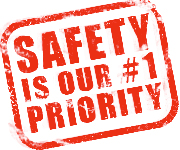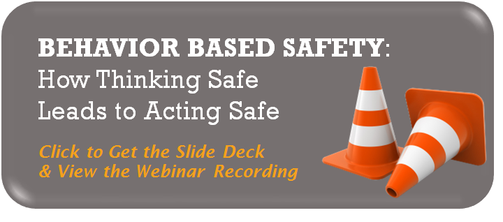CRAIG MARTENS
Relationship Manager at HNI
Last week, our Risk Advisor Kyle Meinert shared his insight on an HNI University webinar called “Behavior Based Safety Programs: How Thinking Safe Leads to Acting Safe."
For those who couldn’t make it or are looking for the “Cliff Notes” with just the highlights, here are a few of the lessons learned.
1. Always start with the ABCs.
 There are three things to consider when looking at any safety hazard or risk.
There are three things to consider when looking at any safety hazard or risk.
a) The Antecedent
b) The Behavior
c) The Consequences.
The antecedent is the event or stimulus that triggered a particular action. It could be a company goal, policy, or training routine, or even the way your facility is set up.
The behavior is the observable act that is performed by an individual, for example, wearing safety glasses or failing to wear proper fall protection.
Consequences are the aftermath of the behavior. We typically think of negative things with the word “consequences” like injuries or product damage, but there can be positive consequences as well -- such as zero fatalities, or even a pizza party as a reward for a job well done.
2. Focus your efforts on the root causes.
Part of changing behavior is simple education. The larger (and more impactful) piece of the puzzle is addressing the “A” and “C” that are associated with it.
You want to create an antecedent that sets people up for success -– an environment that supports the right behavior, with the right policies in place to make it clear what behavior you expect. The environment should make it as easy as possible for people to fulfill that expectation in a safe and effective manner.
Take a mental trip back to science class. Remember Newton's first law of motion? The one that goes:
"An object at rest stays at rest and an object in motion stays in motion.”
If you have a systematic flaw, it will continue to repeat itself until the root cause is addressed.
Implementing a behavior based safety program means taking a methodical approach to identify the root causes of safety risk and developing a plan to control them. The key to this is being proactive and focusing on leading behaviors – then leading, motivating, educating, reinforcing, and improving.
Another method that can be used to focus on root causes is a near miss reporting program. As mentioned in the presentation 300 near misses lead to 29 minor accidents and 1 major accident.
If employees have a way to start reporting some of these near misses they can work together with the safety and management team to implement safer behaviors or conditions. It is important that employees feel safe reporting these near misses and that the management team follows through on the changes. Reducing the amount of near misses will also lower minor accidents and help prevent that one big one.
3. Make it clear what behavior you want to see – then align the incentives
90% of workplace injuries are due to unsafe acts, while only 10% of them are due to unsafe conditions.
Once you have the antecedents squared away, change the consequences (both positive and negative) to influence behavior. If you align incentives with the behavior you’d like to achieve, people will often find ways to change accordingly.
OSHA has tended to “poo poo” some incentive programs because depending on how they’re structured, they may encourage underreporting.
One compliant, OSHA-friendly example that we discussed on the webinar was creating a “Behavior Bank Account,” where you take deductions for unsafe acts. (If you’d like to explore this approach further, contact your relationship manager to learn more about how this could be tailored to your organization.)
Consistency is a biggie -- whether it is positive or negative reinforcement, it should not sway. Allowing exceptions “just this once” or “playing favorites” is a recipe for malcontent that can poison a culture.
Putting these takeaways into action
Building a culture where safety is truly a value takes time and effort. It’s never an overnight, one-and-one initiative. With the right attitude and follow-through, however, you WILL move the needle toward making your company safer and more prosperous.
What were your key takeaways from the webinar on behavior based safety programs? What questions do you have on applying this in your organization? What’s worked well (or not so well) for you in the past? Let us know in the comments!
Related Posts
Get Your Drivers Ready for the 2015 Roadside Inspection Blitz
Beware the Stormchaser: What to Look For When They Come Knocking
Leveraging a Safety Program to Get the Best Rates in a Hard Market
Cyber Liability: Are YOU at Risk for a Data Breach?
Who Has Your Blind Side When it Comes to Business Risk?
.png?width=69&height=53&name=Acrisure%20Logo%20(White%20Horizontal).png)


